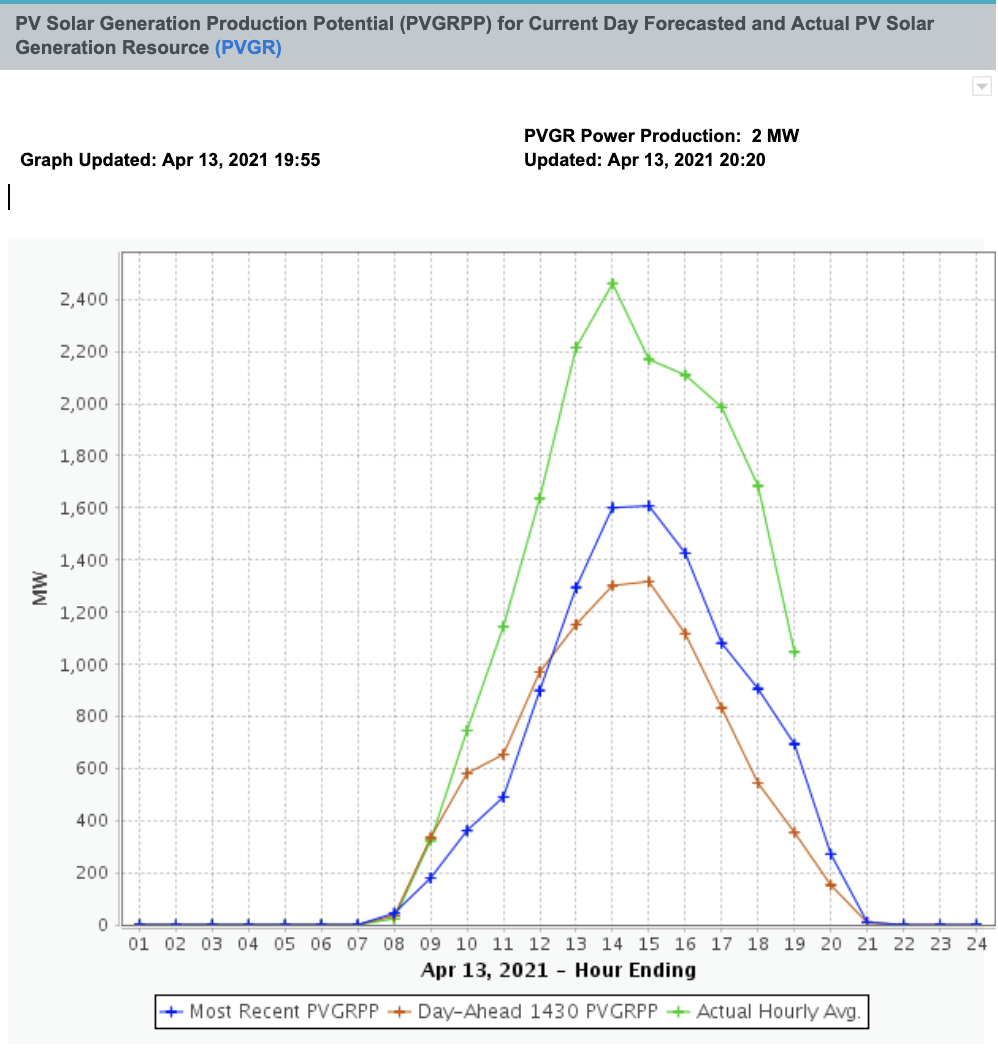
April isn’t usually a time to worry too much about tight reserves in the ERCOT market, but thousands of megawatts of thermal power plants in outage, a cool front in some parts of the state, and warm temperatures led to unexpected cooling demand in others led ERCOT to issue a “conservation” alert Tuesday afternoon. Fortunately, it does not appear that the grid is in any danger of additional outage events like we experienced in February, and ERCOT ended its conservation call Tuesday evening. One spot of good news is that solar energy outperformed its predicted output Tuesday afternoon.
It makes sense to call on Texans to conserve power when reserves get tight, but it would make even more sense for the state to do more to reduce demand. As an example, the state has limited “demand response” resources compared to other states. As filed, SB 2109 by Sen. Schwertner, which is up for a hearing on Thursday, would improve demand response capacity by requiring retail electric providers to expand demand response programs to meet 5 percent of residential load by 2025. That could mean on a hot summer afternoon that demand response programs would be available to ERCOT to potentially pay residential customers to automatically lower the system peak by some 2,000 MW, assuming that residential load is roughly half of total peak load in ERCOT. However, that same demand response bill is apparently being hijacked and rewritten to create a Texas Emergency Power Reserve instead- the anti-competitive plan being pushed by the Warren Buffet-led company Berkshire Hathaway. That plan - instead of reducing demand by paying customers to conserve - would force all electric consumers to pay for an $8 billion reserve consisting of 10 fracked gas power plants, some of them apparently in populated areas.
Senator Schwertner should go back to the original plan of expanding programs to reduce energy use during peak demand. In addition, the Texas Legislature still hasn’t given hearings to companion pieces of legislation - SB 243 by Sen. Eckhardt and HB 4556 by Rep. Anchia - that would expand the state’s energy efficiency goal to one percent of energy consumption by 2025. This week, 19 NGOs and businesses sent a letter to Texas Legislators calling for public hearings on these energy efficiency bills. Taken together, demand response and energy efficiency could reduce peak and overall energy consumption by approximately 4,000 MW for a fraction of the cost of the Warren Buffet plan, while creating jobs, lowering both system-wide costs and air pollution, and making homes and businesses cheaper to operate.
Other important local energy solutions include HB 1533 by Rep. Reynolds, which would create a revolving loan program to help Texans weatherize their homes, and HB 4156 by Rep. John Turner, which would create a process to consider appliance efficiency standards. Distributed generation bills like HB 3624 and HB 3696, both by Rep. Deshotel, related to customer-sited solar and storage, are other local solutions. All of these bills have had hearings but have yet to get out of committee.
“The Texas Legislature should take the cues from the February and April electric grid events to invest in the cheapest, cleanest, and quickest way to meet our energy needs - energy efficiency. Texans should not be forced to add to the piles of cash Warren Buffet sits on because the Legislature backs corporate fracked gas pipedreams,” said Cyrus Reed, Conservation Director of the Sierra Club.